*This page may include affiliate links, which means that if you make a purchase through one of the product links, we may receive a small commission. For full affiliate disclosure please see our disclaimer page.
As our furry friends age or face health challenges, navigating the world of veterinary medications can be overwhelming for dog owners. Butorphanol, a name that might sound intimidating at first, is one such medication you might encounter, especially if your dog deals with specific respiratory issues or pain. But what exactly is butorphanol? Is it safe for your loyal companion? And how does it compare to human medications? Designed to shed light on these questions, this guide dives deep into the world of butorphanol for dogs. From its uses and dosage to potential side effects and natural complementary treatments, we’re here to provide a comprehensive overview. So, take a deep breath (no pun intended) and let’s embark on this informative journey, ensuring your pup gets the best care possible!
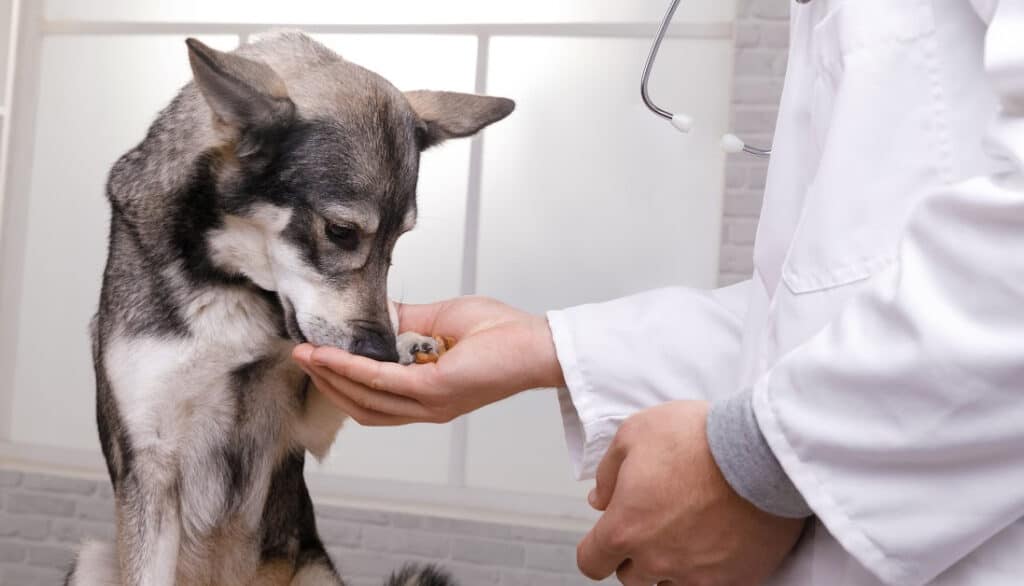
Is Butorphanol Safe for Dogs?
When it comes to the health and well-being of our beloved pets, safety is always a paramount concern. Butorphanol, commonly prescribed in the veterinary world, is no exception to the scrutiny every responsible dog owner should apply when introducing new medications.
Safety Profile
At its core, butorphanol is an opiate analgesic, which means it relieves pain. Veterinarians prescribe it for various reasons, from cough suppression to pain relief post-surgery. When used appropriately and guided by a professional, dogs can safely take butorphanol. It’s worth noting, however, that like all medications, the key lies in the correct dosage and careful monitoring.
Precautions
While butorphanol is generally considered safe, there are precautions that should be heeded:
- Age and Health: Older dogs or those with kidney or liver problems may metabolize drugs differently. Always inform your vet about any underlying health conditions your pet might have.
- Interactions: Butorphanol can interact with other medications. Ensure your vet knows about all other drugs or supplements your dog is taking.
- Sensitivity: Some dogs might be more sensitive to the effects of butorphanol, experiencing more pronounced side effects. Keeping a close watch during the initial stages of administration can be crucial.
Risk of Butorphanol Overdose
Like any medication, there’s a risk of overdose with butorphanol. Administering more than the recommended dosage can lead to complications. Symptoms can include difficulty breathing, extreme drowsiness, or even loss of consciousness. If you suspect an overdose or observe any alarming reactions, seek emergency veterinary care immediately.
To sum up, butorphanol can be safe for dogs when used judiciously and under the guidance of a veterinarian. Always ensure you’re administering the correct dose, be aware of potential interactions, and monitor your dog closely for any adverse reactions. Your dog’s health and safety are paramount, and staying informed is the first step in ensuring they receive the best care.
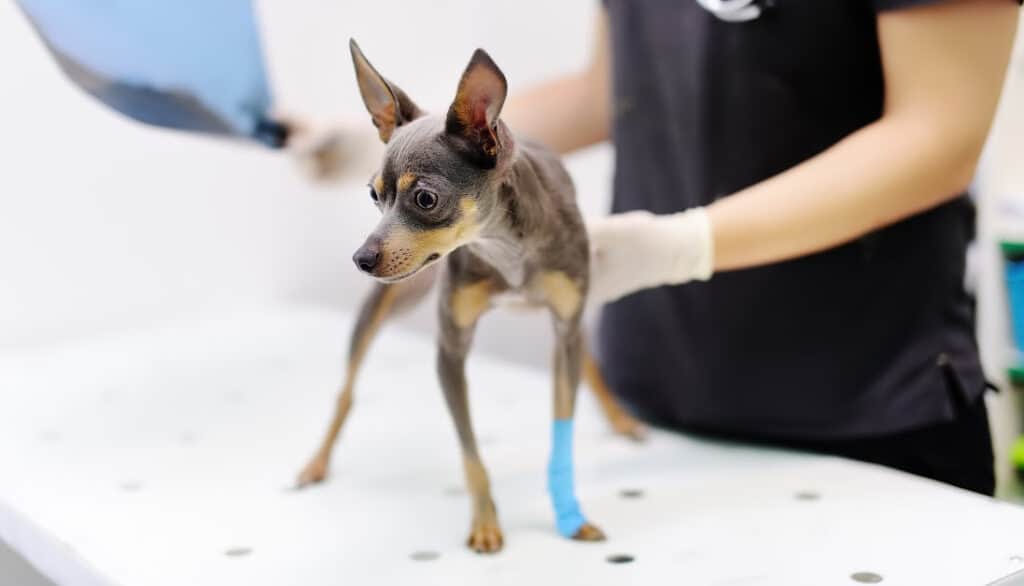
Is Butorphanol for Dogs the Same as for Humans?
Navigating the maze of medications available for both humans and pets can sometimes lead to confusion. A question many pet owners ponder is whether the drugs given to their furry friends are the same as those prescribed to humans. When it comes to butorphanol, there’s a story to tell.
The Basic Compound
Butorphanol, at its molecular level, remains consistent whether it’s meant for humans or dogs. In essence, the active ingredient that provides its therapeutic effect is the same. Doctors prescribe butorphanol to both humans and dogs for its analgesic (pain-relieving) and antitussive (cough-suppressing) properties.
Formulation Differences
While the core compound is consistent, the formulation might differ. Human medications often come with additional ingredients or concentrations designed specifically for human physiology. These might not be safe or effective for dogs. For instance, a pill designed for humans might contain a coating or other ingredients that could be harmful or less digestible for dogs.
Dosage and Strength
The strength and dosage of butorphanol will differ greatly between humans and dogs. What’s considered a safe and effective dose for a human could be dangerous for a dog and vice versa. This difference is because of variations in metabolism, size, and physiology between the species.
Regulations and Approvals
Drugs intended for humans go through a different set of regulatory approvals than those for animals. Even if the active ingredient remains the same, testers and regulators approve the process differently to ensure safety and efficacy for the target audience, whether two-legged or four-legged.
The Bottom Line
While the base compound of butorphanol remains the same for both humans and dogs, it’s imperative not to interchange or substitute one for the other. Always use medications precisely as prescribed by the respective medical or veterinary professional. If you ever run out of your dog’s prescription or mistakenly believe that the human version could be a temporary replacement, resist the urge and consult your vet. It’s always better to be safe and ensure our pets receive treatments tailored specifically to their needs.
Uses of Butorphanol for Dogs
Dogs, much like humans, can suffer from a range of ailments and conditions that require medical intervention. Butorphanol is a versatile medication often prescribed in the veterinary realm. Let’s delve into the primary reasons veterinarians turn to butorphanol when treating man’s best friend.
For Cough
- Mechanism of Action: Butorphanol acts as an antitussive, meaning it suppresses the urge to cough. It affects certain parts of the brain to reduce the cough reflex.
- Applications: Dogs with conditions like kennel cough or other respiratory diseases that cause persistent coughing can use it. However, it’s essential to treat the underlying cause alongside symptom management.
For Collapsed Trachea
- What is a Collapsed Trachea?: The trachea (windpipe) weakens or collapses in a condition called a collapsed trachea, causing breathing difficulties for dogs and often producing a characteristic “goose honk” cough.
- How Butorphanol Helps: While butorphanol won’t treat the condition itself, it can alleviate the symptoms. By suppressing the cough reflex, it provides relief to dogs suffering from the discomfort and distress of frequent coughing.

Pain Relief
- Types of Pain: Butorphanol is primarily an opiate analgesic, making it effective against various pain types, including post-operative pain, injury-induced pain, or chronic pain from conditions like arthritis.
- How it Works: The drug works by acting on certain receptors in the brain, altering the perception of pain. It’s especially useful for short-term pain management, given its relatively short duration of action.
- Comparison to Other Analgesics: While effective, butorphanol might not be as potent as some other opiates. However, its safety profile and reduced risk of side effects can make it a preferred choice in certain scenarios.
Butorphanol boasts a range of uses, from cough suppression to pain management. However, it’s crucial to remember that while it might alleviate symptoms, it might not address the root cause of some conditions, like a collapsed trachea. Always consult with a veterinarian regarding the best treatment plan tailored for your pet’s unique needs, ensuring they lead a comfortable and happy life.

Butorphanol Dosage Chart For Dogs
Remember, you must base the dosage of butorphanol on the dog’s weight, age, health status, and the condition you are treating. Here are some possible dose ranges for butorphanol in dogs:
| Dog’s Weight | Recommended Butorphanol Dosage |
|---|---|
| Under 10 lbs | 0.1 – 0.5 mg/kg |
| 10 – 30 lbs | 0.2 – 0.6 mg/kg |
| 30 – 60 lbs | 0.3 – 0.7 mg/kg |
| Over 60 lbs | 0.4 – 0.8 mg/kg |
Forms of Butorphanol
Butorphanol’s versatility isn’t just in its range of uses but also in the different formulations it comes in. Drug manufacturers create each form with specific applications and advantages to ensure the best possible care for dogs based on their unique needs. Let’s dive into the various forms of butorphanol and their respective characteristics.
Liquids (Oral Solutions)
- Description: This form is typically a liquid solution meant to be administered orally. It may come with a dropper or syringe for accurate dosing.
- Advantages:
- Easier administration for dogs that might resist tablets.
- Faster absorption and onset of action.
- Can adjust the dose with precision.
- Considerations:
- Shorter shelf life than some other forms.
- Some dogs might not like the taste, requiring it to be mixed with food.
Oral Tablets/Capsules
- Description: These are traditional solid forms, either as a tablet or encapsulated powder.
- Advantages:
- Longer shelf life.
- Convenient for travel or on-the-go dosing.
- Considerations:
- Some dogs might resist taking tablets or capsules.
- Breaking tablets for accurate dosing can sometimes result in uneven amounts.
Injections (Injectable Solution)
- Description: This is a liquid form meant to be administered through an injection. It is often used in veterinary clinics or hospitals.
- Advantages:
- Immediate and potent action.
- Useful for dogs that can’t take oral medications due to vomiting or other reasons.
- Ensures complete dosage (no loss as might happen with oral solutions if the dog spits it out).
- Considerations:
- Requires a trained individual for administration.
- Some dogs might experience discomfort at the injection site.
- Not as convenient for regular at-home administration.
Choosing the right form of butorphanol depends on the dog’s specific condition, the owner’s comfort level with administration, and the dog’s own preferences or behaviors. It’s always important to discuss with a veterinarian the most suitable form for your pet, ensuring that they not only get the medication they need but also in a manner that causes the least stress or discomfort.
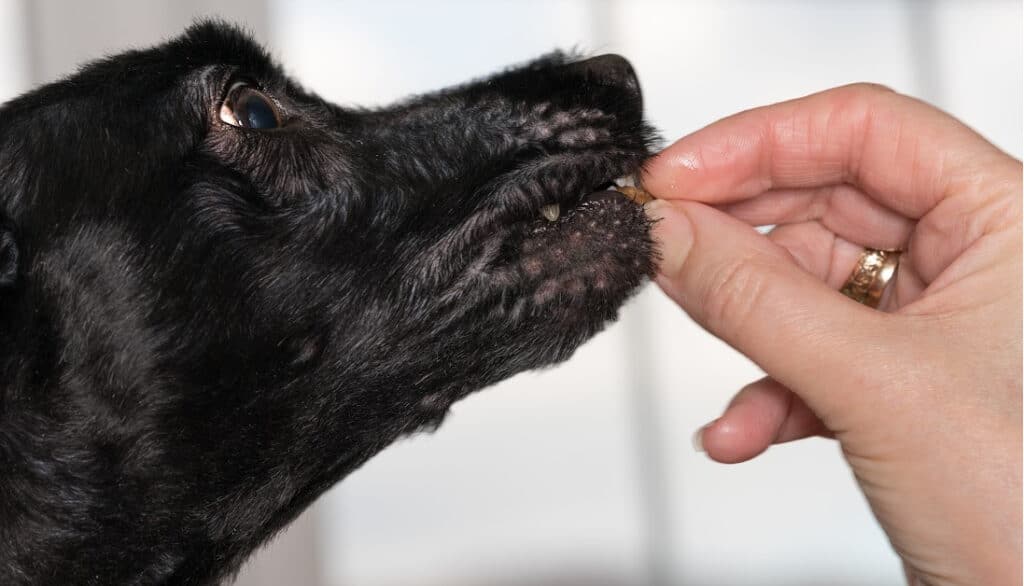
Side Effects of Butorphanol
Butorphanol, like all medications, can have potential side effects. While it’s a valuable drug for managing pain and other conditions in dogs, it’s essential for pet owners to be aware of its possible side effects to ensure the safety and well-being of their canine companions. All dogs may not experience these side effects, and many of them might be mild, but taking a proactive step in pet care requires staying informed.
Common Side Effects:
- Sedation: One of the most frequently observed side effects. Dogs might seem drowsy or less alert.
- Ataxia: This refers to uncoordinated or stumbling movements, often as a result of the drug’s sedative effect.
- Decreased Heart Rate: Some dogs might experience a drop in their heart rate.
- Decreased Respiratory Rate: A potential decrease in the number of breaths a dog takes per minute.
- Vomiting and Diarrhea: Gastrointestinal upset can sometimes occur.
- Increased Urination: Some dogs might urinate more frequently than usual.
Less Common Side Effects:
- Appetite Changes: This could be either an increased or decreased appetite.
- Agitation or Anxiety: Though it’s a sedative, some dogs might react oppositely and become restless.
- Digestive Issues: Beyond vomiting and diarrhea, some dogs might experience gas or bloating.
- Changes in Vision: Rare, but some dogs might have dilated pupils or seem to have altered vision.
Severe Side Effects (Seek Veterinary Care Immediately):
- Difficulty Breathing: If your dog seems to be struggling to breathe, seek help right away.
- Allergic Reaction: Symptoms might include swelling, intense itching, hives, or difficulty breathing.
- Prolonged Sedation: If your dog seems excessively drowsy and doesn’t respond to stimuli, it might be a cause for concern.
- Collapse: Any sudden weakness or collapse warrants immediate veterinary attention.
Interactions:
It’s also important to note that butorphanol can interact with other medications. If your dog is on any other treatment, whether it’s prescription or over-the-counter, always inform your veterinarian.
While the above list might seem intimidating, it’s important to understand that many dogs tolerate butorphanol well, and the benefits often outweigh potential risks. Regularly monitor and openly communicate with your veterinarian to catch and manage any side effects effectively early on.
Remember, every dog is unique, so it’s about finding the right balance for your pet’s individual needs. Always prioritize their comfort and well-being, and don’t hesitate to reach out to professionals when in doubt.
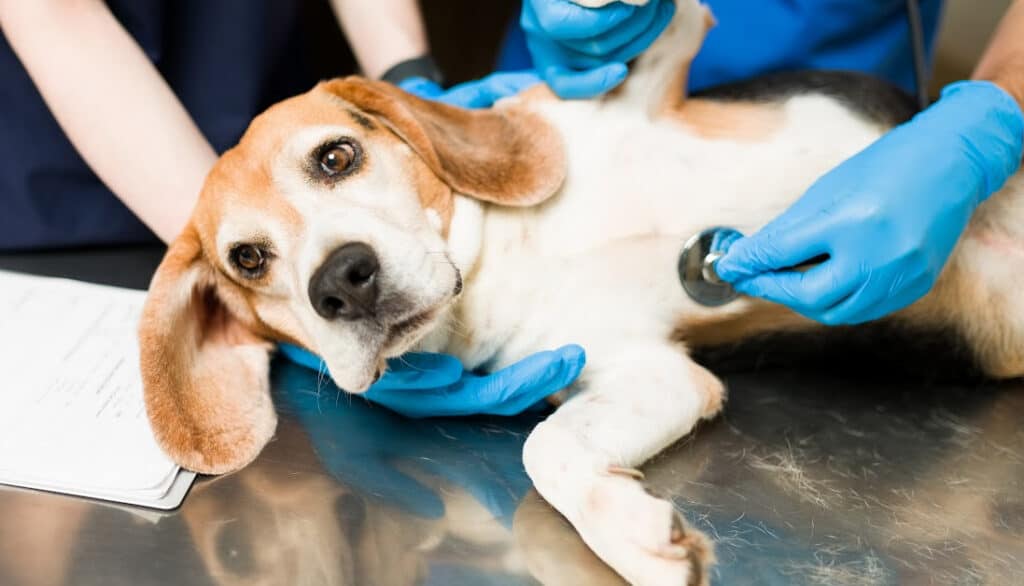
How Long Does Butorphanol Last?
Understanding the duration of action of a medication is vital. It not only dictates the dosing frequency but also helps pet owners anticipate the window of relief for their pets and be aware of potential side effects. When it comes to butorphanol, its duration in the system is an essential aspect of its pharmacological profile.
Duration of Action
Butorphanol, when administered to dogs, generally has a relatively short duration of action. On average, its analgesic (pain-relieving) effects last:
- Oral administration: Effects might be noticed within 30 minutes to an hour after dosing, and the pain-relieving properties often last between 2 to 4 hours.
- Injectable form: The onset is quicker, usually within minutes, but its duration is typically in the same 2 to 4-hour range.
Factors Influencing Duration
Several factors can influence how long butorphanol lasts in a dog’s system:
- Metabolism: Just like humans, dogs have individual metabolic rates. Some dogs might process medications faster or slower than the average.
- Age: Older dogs might have a slower metabolism, meaning drugs could stay in their system for a longer period.
- Health Conditions: Liver and kidney function play a pivotal role in drug processing. Dogs with compromised organ function might metabolize drugs differently.
- Other Medications: If your dog is on other medications, these can potentially affect the metabolism of butorphanol.
Clinical Implications
Because butorphanol has a relatively short duration of action, you might need to administer it more frequently than some other pain relievers. This frequent dosing can be both an advantage (flexibility in adjusting dosages) and a limitation (more frequent dosing might be challenging for some pet owners).
While butorphanol is effective in providing relief, its short-lived action necessitates a clear understanding and commitment to dosing schedules. Always monitor your dog’s reaction post-administration to gauge the effectiveness and duration in real-world scenarios. And, as always, consult with your veterinarian about any concerns or if you feel the medication’s effects aren’t lasting as long as expected.

How to Give Butorphanol to Your Dog
Administering medication to your pet can sometimes be a daunting task, especially if your furry friend is anxious or uncooperative. But with the right techniques and a calm approach, giving butorphanol to your dog can become a straightforward process. Here’s a guide to help you through it:
1. Read the Prescription Carefully
Before anything else, always ensure you’re clear about the dosage, frequency, and any specific instructions from the veterinarian.
2. Prepare the Medication
- Oral Solutions: If it’s a liquid form, shake the bottle well (if instructed), and draw up the required amount using a syringe or dropper.
- Tablets/Capsules: Have the pill ready. If your dog is reluctant to take tablets, consider a pill pocket or wrapping it in a tasty treat.
3. Choose a Calm Environment
Select a quiet spot with minimal distractions. This will help keep your dog calm and make the process smoother.
4. Positioning
- For Oral Solutions/Tablets: Hold your dog’s muzzle gently and tilt its head slightly back. Using your other hand, insert the dropper between the cheek and back teeth or place the pill as far back on the tongue as possible. Close the mouth and gently hold it shut while encouraging swallowing by massaging the throat.
- For Injections: A veterinarian or trained professional typically performs this. If a professional instructs you to administer injections at home, make sure you receive proper training in the technique and always select a different site for each injection.
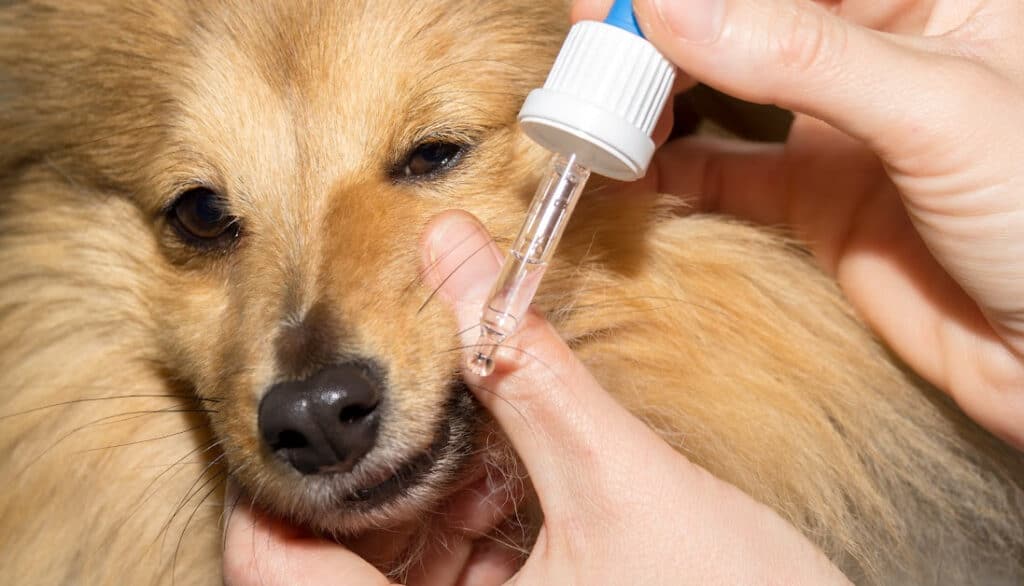
5. Positive Reinforcement
After administering the medication, reward your dog with praise, a gentle petting session, or a small treat (if allowed). This positive reinforcement can make future administrations easier.
6. Monitor for Reactions
Always keep an eye on your dog after giving medication to ensure there’s no adverse reaction. Look for signs of distress, excessive drooling (for oral medications), or any other unusual behavior.
7. Storage
Store butorphanol as advised by the veterinarian or as per the label. You should generally store it in a cool, dry place, keep it away from sunlight, and ensure it’s out of reach of children and pets.
8. Missed Doses
If you miss giving a dose, administer it as soon as you remember. However, if it’s close to the next dose, skip the missed one and continue with the regular schedule. Never give a double dose.
9. Seek Assistance for Difficulties
If your dog consistently resists taking the medication or if you feel unsure, don’t hesitate to consult your vet. They might offer alternative solutions or techniques.
Administering butorphanol, like any medication, requires patience, consistency, and care. Familiarizing yourself with the process and ensuring a positive experience for your dog will make the task easier over time. Remember, the goal is to make your pet comfortable and healthy, so always approach the situation with calmness and compassion.

Complementary Natural Products To Butorphanol That You Can Add To Your Treatment Plan
Dr. Candy’s Recommendations
Incorporating natural products alongside traditional medicines like butorphanol can offer holistic care for your dog, potentially boosting the therapeutic effects or even offering relief from some side effects. However, always consult with a veterinarian before introducing any new product into your dog’s regimen to ensure safety and compatibility. Here’s a list of natural products and their potential benefits:
1. Breathe Essential Oils
- Description: People believe that certain essential oils promote respiratory health and alleviate congestion.
- Potential Benefits:
- Eucalyptus and peppermint oils can help clear nasal passages.
- Lavender can offer calming effects, reducing stress.
- Caution: Ensure any essential oil used is pet-safe. Always dilute them and never apply directly to the skin or let pets ingest them.
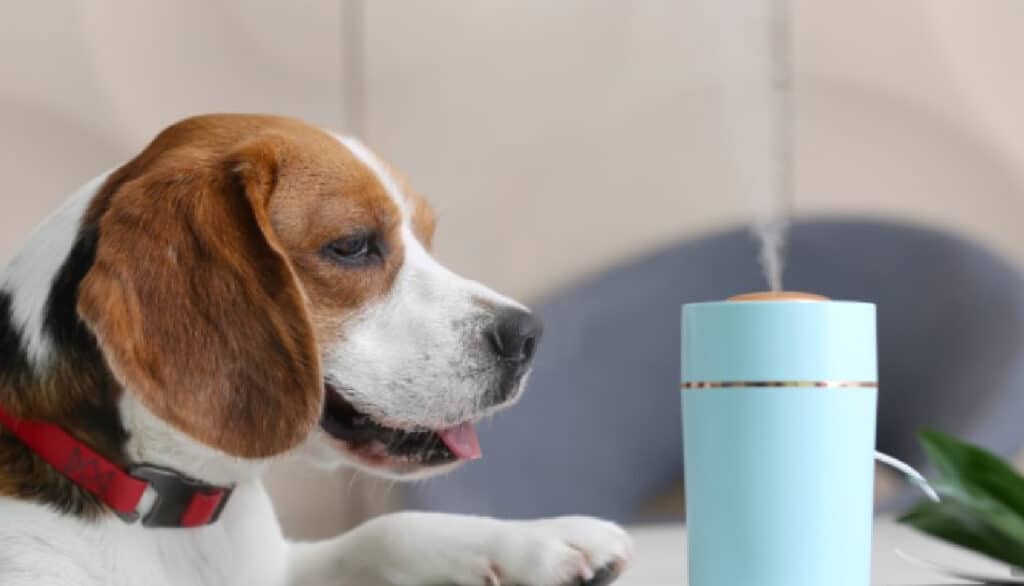
2. Air Purifier
- Description: Devices that filter and purify indoor air to remove particles, allergens, and pollutants.
- Potential Benefits:
- Reduces allergens that can exacerbate respiratory issues.
- Promotes a cleaner environment, beneficial for overall health.
3. Air Humidifier
- Description: Adds moisture to indoor air, preventing dryness.
- Potential Benefits:
- Helps in keeping respiratory passages moist.
- Beneficial in conditions like kennel cough or dry environments.

4. Respiratory Herb Tinctures
- Description: Herbal extracts are believed to support respiratory health.
- Potential Benefits:
- Herbs like mullein, licorice, and marshmallow can soothe irritated respiratory tracts.
- Can offer natural anti-inflammatory effects.
- Caution: Ensure the herbs used are safe for canine consumption.
5. HomeoPet
- Description: A brand known for its natural homeopathic remedies for pets.
- Potential Benefits:
- Offers a range of treatments for various ailments, including respiratory issues.
- People generally consider homeopathic remedies safe and associate them with minimal side effects.
Natural additions and complementary products can offer a multi-pronged approach to your dog’s health, working alongside prescribed medications for optimal benefits. However, it’s crucial to remember that natural doesn’t always mean safe. Always consult your veterinarian, keep an eye out for any reactions, and ensure that the chosen products are safe and beneficial for your pet.

Conclusion
Navigating the world of canine health and well-being can often seem overwhelming with the myriad of options and decisions to make. Butorphanol stands as a testament to modern veterinary medicine’s ability to offer relief and comfort to our furry friends. While it’s an effective solution for various ailments, as with any medication, knowledge is key. Informing yourself about its uses, dosage, side effects, and complementary treatments ensures you make the best choices for your beloved companions.
Moreover, embracing a holistic approach, which marries traditional medicine with complementary natural products, can offer a comprehensive care plan tailored to individual needs. Always remember, the goal is to ensure the happiness and health of your pet, so regular consultations with your trusted veterinarian and continuous education are paramount.
In the journey of pet ownership, the well-being of our furry family members is a shared responsibility between owners, veterinarians, and even the wider community. Here’s to creating a world where our pets thrive, brimming with joy, health, and boundless energy!
Frequently Asked Questions
Butorphanol is an opiate drug used as a cough suppressant in dogs and, in a variety of species, as a pain reliever. It is also used in combination with other drugs as a sedative or restraining agent. Sometimes butorphanol is used during chemotherapy to prevent chemotherapy-induced vomiting. The FDA (U.S. Food & Drug Administration) has approved this drug for use in dogs, cats, and horses (not for horses to be used for food) as a pain reliever and as a cough suppressant for dogs. The FDA allows veterinarians to prescribe and use products containing this drug in different species or for other conditions in certain situations. You and your veterinarian can discuss why this drug is the most appropriate choice.
Many things might affect how well this drug will work in your animal. Be sure to discuss the following with your veterinarian so together you can make the best treatment decisions.
– Other drugs can interact with butorphanol, so be sure to tell your veterinarian and pharmacist what medications (including vitamins, supplements, or herbal therapies) you give your animal, including the amount and time you give each.
– Tell your veterinarian about any conditions or diseases your animal may have now or has had in the past. If your animal has been treated for the same disease or condition in the past, tell your veterinarian about the treatment and how well it did or didn’t work.
– If your animal is pregnant or nursing, talk to your veterinarian about the risks of using this drug.
Tell your veterinarian and pharmacist about any medication side effects (including allergic reactions, lack of appetite, diarrhea, itching, hair loss) your animal has developed in the past.
This medication should help your animal feel better within 1 to 2 hours. Your animal’s clinical signs should improve after that time. The effects of this medication are short-lived, meaning they will stop working within 24 hours, although the benefits may be prolonged if your animal has decreased kidney and/or liver function.
No drug is 100% safe in all patients, but your veterinarian will discuss with you any specific concerns about using this drug in your animal.
This drug should NOT be used in:
– That are allergic to it.
This drug should be used WITH CAUTION in patients:
– With lung disease. Rarely, butorphanol can depress breathing ability. The manufacturer recommends that butorphanol NOT be used in patients with lung diseases that produce a lot of mucus because it can prevent the coughing up of mucus.
– That are pregnant. Butorphanol does not appear to have a significantly large risk for causing birth defects, but the manufacturer warns not to use during pregnancy.
– That are old, weak, or frail.
– Hypothyroidism, severe renal (kidney) disease, or adrenocortical insufficiency (Addison’s disease).
– With head trauma or other serious central nervous system conditions (eg, coma).
– Heartworm disease.
With liver disease. The manufacturer does not recommend use in dogs with a history of liver disease.
– That may have a certain genetic mutation (ABCB1-1Δ also called MDR1) until they are tested. This mutation is most commonly found in “white feet” breeds: collies, Australian shepherds, Shetland sheepdogs (Shelties), long-haired whippets. Dogs with this mutation may be overly sensitive to the drug and may require much lower doses.
– That are turtles or tortoises. In these species, butorphanol does not appear to provide good pain relief and can cause respiratory depression.
If your animal matches any of these conditions, talk to your veterinarian about the potential risks versus benefits.
Side effects that usually are not serious include:
– Dogs, Cats: Sedation (sleepiness, drowsiness) is the most common; however, some animals may become overly excited with this drug.
– Dogs, Cats: Gastrointestinal effects (decreased appetite, vomiting, constipation, or diarrhea [rare]) can be seen.
– Horses: Ataxia (unsteadiness) and sedation (sleepiness) can occur soon after a dose. If doses are high, this can be followed by excitement(tossing and jerking of head, greater desire to move, and exaggerated responses to loud noises).
You don’t have to be overly concerned if you see any of these signs unless they are severe, worsen, or continue to be a problem.
Contact your veterinarian if this happens.
Side effects that may be serious orindicate a serious problem:
– Respiratory depression (rare; troubled breathing, inability to wake your animal up).
– Horses: Higher doses can cause the eyes to move back and forth (nystagmus), salivation, seizures, and a high body temperature (hyperthermia). or indicate
– Horses: Gastrointestinal effects. Butorphanol can reduce or stop normal intestinal movement. This effect is not common, but horses can exhibit signs of colic (rolling, repeatedly looking back at the abdomen, kicking at the abdomen).
Contact your veterinarian immediately if you see any of these signs.
If you witness or suspect an overdose, contact your veterinarian or an animal poison control center for further advice. Animal poison control centers that are open 24 hours a day include: ASPCA Animal Poison Control Center (888-426-4435) and Pet Poison HELPLINE (855-764-7661); a consultation fee is charged for these services.
For this medication to work, give it exactly as your veterinarian has prescribed. It’s a good idea to always check the prescription label to be sure you are giving the drug correctly.
– Butorphanol can be given either as an oral tablet or injection. This drug comes in many different-sized tablets and strengths for injection. Make sure that you are using the correct amount as prescribed by your veterinarian.
– Tablets may be given either with food or on an empty stomach. Should your animal vomit or act sick after receiving the drug on an empty stomach, try giving the next dose with food or a small treat. If vomiting continues, contact your veterinarian.
– Your veterinarian may guide you on administering this medication via an intramuscular or subcutaneous injection. Ensure you’re well-versed with the correct locations and techniques.
– If you are giving these shots at home, place used needles and syringes in a sharps disposal container immediately after they have been used. Do not reuse needles and syringes. Your veterinarian or pharmacist will help you obtain the sharps containers. Be careful not to accidentally stick yourself; do not attempt to disconnect the needle from the syringe. Keep containers out of reach of children and pets.
– If you have difficulty getting your animal to take the medicine, contact your veterinarian or pharmacist for tips to help with dosing and reducing the stress of medication time.
This medication can be given for various lengths of time. Be sure you understand how long the veterinarian wants you to continue giving this medication. Prescription refills may be necessary before the therapy will be complete. Before stopping this medication, talk to your veterinarian, as there may be important reasons to continue its use.
If you miss a dose, give it when you remember and then wait the amount of time between doses recommended by your veterinarian before giving another dose. Do not double-up or give extra doses.
Store tablets in the original prescription bottle or an approved dosage reminder container (ie, pill minder) at room temperature out of bright light. Do not allow the injection liquid to freeze. If your veterinarian or pharmacist has made (compounded) a special formulation for your animal, follow the storage recommendations and expiration date for the product. Keep away from children and other animals.
There are no specific precautions required when handling this medication unless you are allergic to it. Wash your hands after handling any medication.
– Do not flush this medication down the toilet or wash it down the sink.
– If a community drug “take-back” program is available, use this option. If there is no take-back program, mix the drug with coffee grounds or cat litter (to make it undesirable to children and animals and unrecognizable to people who might go through your trash), place the mixture in a sealable plastic bag to keep it from leaking out, and throw the bag out with the regular trash. Do not save leftover medication for future use or give it to others to use.
Butorphanol is a controlled substance and should not be given to anyone other than the animal for whom it was prescribed. Prescriptions can only be refilled up to 5 times within 6 months of the original prescription date. Butorphanol may partially reverse the effects of other pain relievers and tranquilizers. Don’t give other drugs for pain along with butorphanol without first talking with your veterinarian. Use of this drug may not be allowed in certain animal competitions. Check rules and regulations before entering your animal in a competition while this medication is being administered. If you have any other questions about this medication, contact your vet
